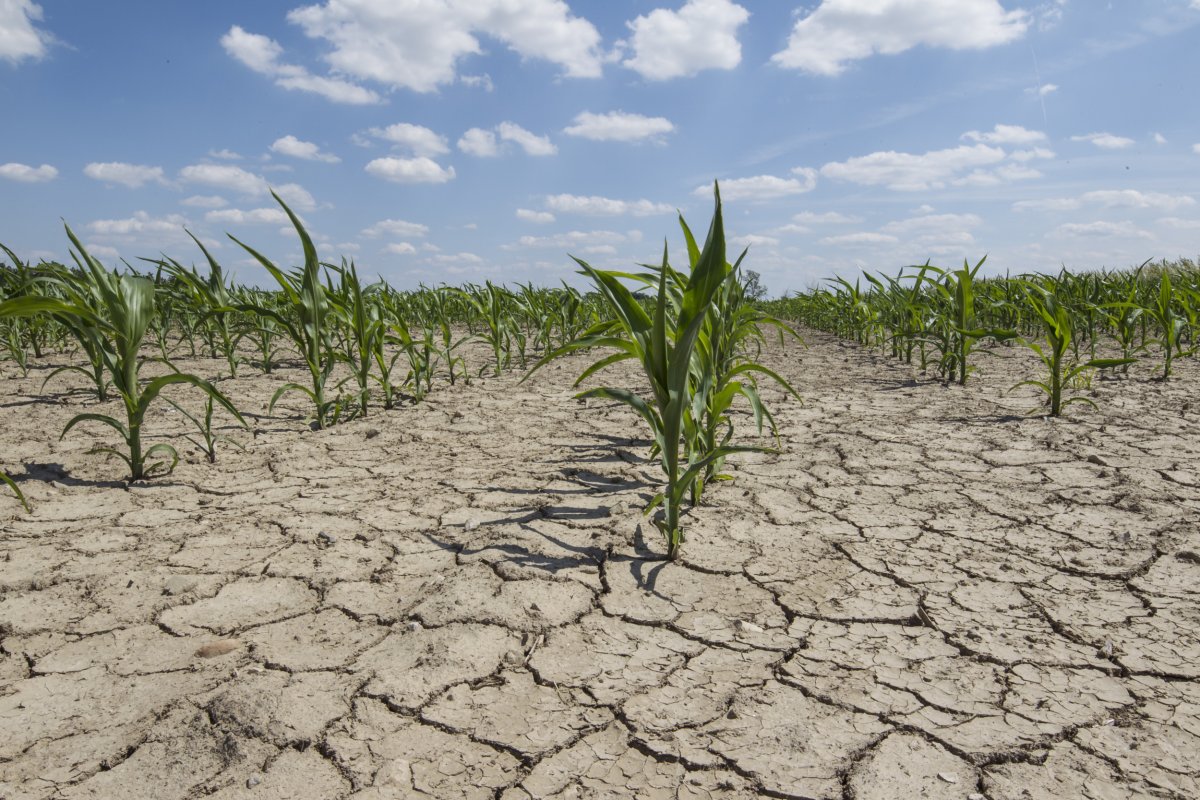Rain and snowfall have been steadily decreasing across the U.S. Southwest over the past few decades, and it may be due to tiny particles of smoke, dust, and water vapor emitted by industry.
The amount of precipitation that falls across the Southwest in the winter and spring is linked to fluctuations in sea temperatures in the Pacific, known technically as Pacific internal decadal variability (PDV).
According to a new paper in the journal Geophysical Research Letters, these sea temperatures can be altered by a type of industrial emissions known as aerosols, causing reduced precipitation since the 1980s.
"We find evidence that the shift of aerosol emissions from the Western to the Eastern Hemisphere induced a change in Pacific SSTs [sea surface temperatures] that in turn favors a winter-spring Southwestern United States precipitation decline," the authors wrote in the paper.

Precipitation during the winter and spring is essential to the U.S. Southwest, which has been in the grips of a megadrought for the past 20 years. Megadroughts are defined as extended periods where rainfall remains below average for many years, leading to reduced groundwater levels and drying out of lakes, reservoirs and rivers. The drought-ridden region relies on the winter/spring rainfall and snowpack to refill these water bodies, which are essential drinking and agricultural water for millions of people living nearby.
Now it seems that a driver of decreasing precipitation in this region is aerosol emissions produced as a result of human activity, called anthropogenic aerosols (AAs).
"We find up to 42 percent of the observed precipitation trend to be related to the AA-induced negative PDV-like pattern, which is driven by the emission shift from the Western to the Eastern Hemisphere," the authors explain. "As temperature is projected to increase further in the future, the main uncertainty around Southwestern United States drought occurrence is precipitation."
Aerosols include tiny particles of pollution, smoke, dust, and water vapor released from a vast range of industries, including transportation, coal combustion, cement manufacturing, metallurgy, and waste incineration.
"The [anthropogenic aerosol]-driven negative PDV-like pattern originates from the post-1980 shift of aerosol emissions from the Western to the Eastern Hemisphere, which has been suggested to be conducive to Southwestern United States precipitation declines," the authors wrote.
The effects of climate change are expected to further worsen the lessening precipitation in the U.S. Southwest, with increased temperatures worsening the megadrought and drying out more of the limited water resources.
"Climate change is making the drought conditions more severe: hotter weather leads to more evaporation, dryer soils, less available water. Drought for the Southwest is expected to continue," Lara Fowler, an environmental and energy issues attorney and interim director of the Penn State Sustainability Institute at Penn State University, told Newsweek.
However, the impacts of these aerosols may change in the coming years, as greenhouse gases can actually prevent aerosols from having this effect.
"Additionally, we showed that other human-caused factors, such as greenhouse gases, can offset the impact of aerosols. This means that the near-future Southwestern United States precipitation change depends on the trajectories and the interactions of these various human-caused factors," the authors wrote.
This comes as rising temperatures in the U.S. Southwest are scorching even the hardiest of crops, according to a new paper in the journal Earth's Future. This is because the hotter air can hold more water vapor, sapping the water out from the plants.

"For every degree Celsius of warming, the amount of water vapor the air can hold goes up by about 7 percent because the hydrogen and oxygen atoms in the air are bouncing around more," paper co-author Chris Funk, a climate scientist at the University of California, Santa Barbara, said in a statement. "So there's more space in between them and that can hold more water."
"There are three major impacts of this deficit on the landscape," Funk explained. "One would be less productive crops. Another, which is the one we focused on, is rangeland productivity—pasture health. And the third is wildfire extent and low dead fuel moisture levels."
One possible workaround for this problem could be planting crops that are much less water-intensive, another new paper in the journal Nature Water found. The authors suggest planting these crops could result in water savings of between 28 and 57 percent in certain areas.
"Once you know how much water a crop needs and how extensively that crop has grown, you can estimate the total volume of water that that crop requires in a particular place," paper co-author Kyle Davis, an assistant professor in the Department of Geography and Spatial Sciences and the Department of Plant and Soil Sciences at the University of Delaware, said in a statement. "We input these volumes into a national hydrological model that estimates how much water is consumed in each sub-basin across the U.S. and then passes that remaining water downstream to the subsequent sub-basins so you can see how the depletion propagates along the entire river basin."
"With issues like climate change and extensive droughts happening, it's even more of a pressing issue to reduce water demand so that different human and ecological activities can continue to take place," Davis said. "This is our way of putting an alternative suggestion out there to what has already been considered as a way that can substantially save a lot of water."
Do you have a tip on a science story that Newsweek should be covering? Do you have a question about aerosols? Let us know via science@newsweek.com.
About the writer
Jess Thomson is a Newsweek Science Reporter based in London UK. Her focus is reporting on science, technology and healthcare. ... Read more
To read how Newsweek uses AI as a newsroom tool, Click here.





